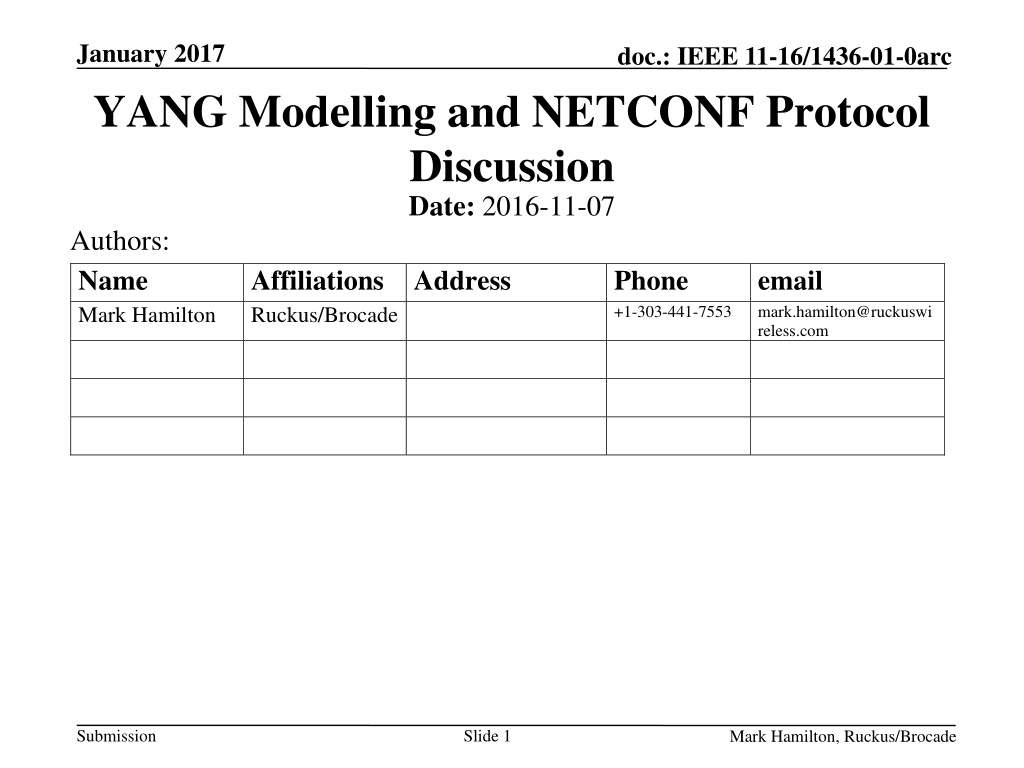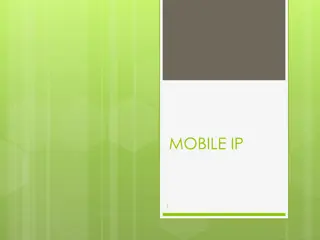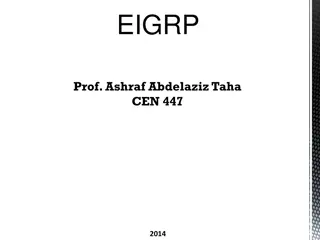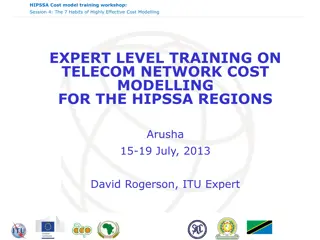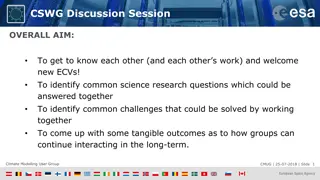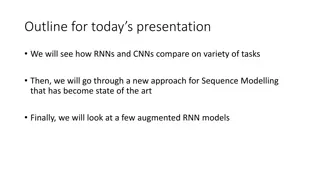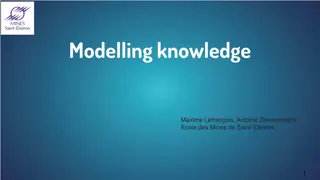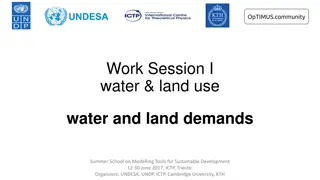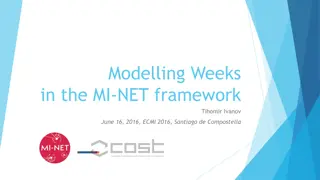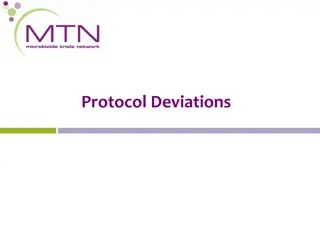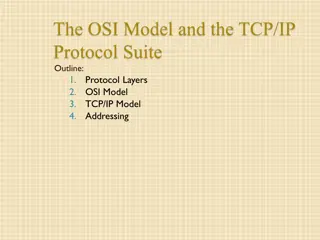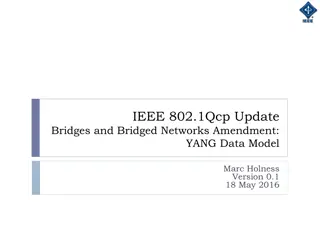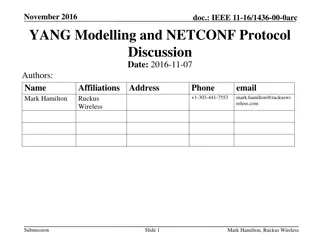YANG Modelling and NETCONF Protocol Discussion
Brief introduction to YANG modelling and NETCONF protocol for managing system configuration. Presentation by Mark Hamilton from Ruckus/Brocade discussing the use of these methods in the 802.11 Std. Includes useful web resources and references to relevant RFCs. Contrasts pros and cons of SNMP/SMI/MIB in device monitoring.
Download Presentation

Please find below an Image/Link to download the presentation.
The content on the website is provided AS IS for your information and personal use only. It may not be sold, licensed, or shared on other websites without obtaining consent from the author. Download presentation by click this link. If you encounter any issues during the download, it is possible that the publisher has removed the file from their server.
E N D
Presentation Transcript
January 2017 YANG Modelling and NETCONF Protocol Discussion Date: 2016-11-07 Authors: doc.: IEEE 11-16/1436-01-0arc Name Mark Hamilton Affiliations Address Ruckus/Brocade Phone +1-303-441-7553 email mark.hamilton@ruckuswi reless.com Sli de 1 Submission Slide 1 Mark Hamilton, Ruckus/Brocade
January 2017 doc.: IEEE 11-16/1436-01-0arc Abstract This presentation has a VERY brief introduction to YANG modelling and NETCONF protocol, for managing configuration of systems, in preparation for consideration by ARC, and potential recommendation to 802.11 WG on use of these methods in the 802.11 Std. Sli de 2 Submission Slide 2 Mark Hamilton, Ruckus/Brocade
January 2017 doc.: IEEE 11-16/1436-01-0arc Some useful web-sites, I ve found http://www.yang- central.org/twiki/bin/view/Main/WebHome https://en.wikipedia.org/wiki/YANG http://www.slideshare.net/cmoberg/a- 30minute-introduction-to-netconf-and-yang New!: https://github.com/YangModels/yang/tree/master/standard/i eee http://www.ieee802.org/3/YANG/public/ Sli de 3 Submission Slide 3 Mark Hamilton, Ruckus/Brocade
January 2017 doc.: IEEE 11-16/1436-01-0arc References RFC 3535 - Overview of the 2002 IAB Network Management Workshop, May 2003 RFC 4741 - NETCONF Configuration Protocol, Dec 2006 RFC 6020 - YANG - A Data Modeling Language for the Network Configuration Protocol (NETCONF), Oct 2010 RFC 6241 - Network Configuration Protocol (NETCONF), June 2011 https://tools.ietf.org/html/draft-ietf-netmod-smi-yang- 05 - Translation of SMIv2 MIB Modules to YANG Modules, April 2012 Sli de 4 Submission Slide 4 Mark Hamilton, Ruckus/Brocade
January 2017 Pros/Cons of SNMP/SMI/MIB, from RFC 3535 + SNMP works reasonably well for device monitoring. The stateless nature of SNMP is useful for statistical and status polling. + SNMP is widely deployed for basic monitoring. Some core MIB modules, such as the IF-MIB [RFC2863], are implemented on most networking devices. + There are many well defined proprietary MIB modules developed by network device vendors to support their management products. + SNMP is an important data source for systems that do event correlation, alarm detection, and root cause analysis. doc.: IEEE 11-16/1436-01-0arc o SNMP requires applications to be useful. SNMP was, from its early days, designed as a programmatic interface between management applications and devices. As such, using SNMP without management applications or smart tools appears to be more complicated. o Standardized MIB modules often lack writable MIB objects which can be used for configuration, and this leads to a situation where the interesting writable objects exist in proprietary MIB modules. - There are scaling problems with regard to the number of objects in a device. While SNMP provides reasonable performance for the retrieval of a small amount of data from many devices, it becomes rather slow when retrieving large amounts of data (such as routing tables) from a few devices. - There is too little deployment of writable MIB modules. While there are some notable exceptions in areas, such as cable modems where writable MIB modules are essential, it appears that router equipment is usually not fully configurable via SNMP. - The SNMP transactional model and the protocol constraints make it more complex to implement MIBs, as compared to the implementation of commands of a command line interface interpreter. A logical operation on a MIB can turn into a sequence of SNMP interactionswhere the implementation has to maintain state until the operation is complete, or until a failure has been determined. In case of a failure, a robust implementation must be smart enough to roll the device back into a consistent state. - SNMP does not support easy retrieval and playback of configurations. One part of the problem is that it is not easy to identify configuration objects. Another part of the problem is that the naming system is very specific and physical device reconfigurations can thus break the capability to play back a previous configuration. - There is often a semantic mismatch between the task-oriented view of the world usually preferred by operators and the data- centric view of the world provided by SNMP. Mapping from a task-oriented view to the data-centric view often requires some non- trivial code on the management application side. - Several standardized MIB modules lack a description of high-level procedures. It is often not obvious from reading the MIB modules how certain high-level tasks are accomplished, which leads to several different ways to achieve the same goal, which increases costs and hinders interoperability. Sli de 5 Submission Slide 5 Mark Hamilton, Ruckus/Brocade
January 2017 doc.: IEEE 11-16/1436-01-0arc Purpose of YANG YANG is a data modeling language used to model configuration and state data manipulated by the Network Configuration Protocol (NETCONF), NETCONF remote procedure calls, and NETCONF notifications. YANG is used to model the operations and content layers of NETCONF (see the NETCONF Configuration Protocol [RFC4741], Section 1.1). YANG strikes a balance between high-level data modeling and low-level bits-on-the-wire encoding. The reader of a YANG module can see the high-level view of the data model while understanding how the data will be encoded in NETCONF operations. Per IETF RFC 6020 Sli de 6 Submission Slide 6 Mark Hamilton, Ruckus/Brocade
January 2017 doc.: IEEE 11-16/1436-01-0arc Benefits of YANG YANG is a data modeling language designed to write data models for the NETCONF protocol. It provides the following features: Human readable, and easy to learn representation Hierarchical configuration data models Reusable types and groupings (structured types) Extensibility through augmentation mechanisms Supports definition of operations (RPCs) Formal constraints for configuration validation Data modularity through modules and sub-modules Well defined versioning rules. Exerpt from Carl Moberg s 30-minute Introduction to NETCONF and YANG (http://www.slideshare.net/cmoberg/a-30minute-introduction-to-netconf-and-yang ) Sli de 7 Submission Slide 7 Mark Hamilton, Ruckus/Brocade
January 2017 doc.: IEEE 11-16/1436-01-0arc Purpose of NETCONF The NETCONF protocol defines a simple mechanism through which a network device can be managed, configuration data information can be retrieved, and new configuration data can be uploaded and manipulated. The protocol allows the device to expose a full, formal application programming interface (API). Applications can use this straightforward API to send and receive full and partial configuration data sets. The NETCONF protocol uses a remote procedure call (RPC) paradigm. A client encodes an RPC in XML [W3C.REC-xml- 20001006] and sends it to a server using a secure, connection- oriented session. The server responds with a reply encoded in XML. Per IETF RFC 6241 Sli de 8 Submission Slide 8 Mark Hamilton, Ruckus/Brocade
January 2017 doc.: IEEE 11-16/1436-01-0arc http://www.ieee802.org/1/files/public/docs2016/liaison-BBF- YANG-1116-v01.pdf http://www.ieee802.org/1/files/public/docs2016/new-cummings- tsn-yang-work-0916-v00.pdf Sli de 9 Submission Slide 9 Mark Hamilton, Ruckus/Brocade
January 2017 doc.: IEEE 11-16/1436-01-0arc http://www.netconfcentral.org/database_docs Sli de 10 Submission Slide 10 Mark Hamilton, Ruckus/Brocade
January 2017 doc.: IEEE 11-16/1436-01-0arc http://www.mg-soft.com/mgYangDesigner.html Converting MIB files to YANG files If you need to convert MIB files to YANG files, we certainly recomend using MG-SOFT MIB Explorer, which has, among many other features, also a function for converting MIB files to YANG files. After the conversion you can continue editing YANG files in MG-SOFT Visual YANG Designer in order to add or edit the properties that were not available in the original MIB files. Here you can find a zip file containing both, the original MIB file and the YANG file converted from the MIB by MIB Explorer. Sli de 11 Submission Slide 11 Mark Hamilton, Ruckus/Brocade
